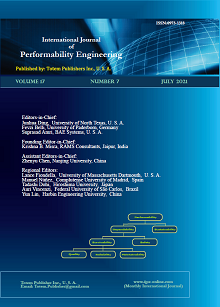-
Multi-Objective Power Grid Interdiction Model Considering Network Synchronizability
- Claudio M. Rocco, Kash Barker, and Jose E. Ramirez-Marquez
-
2021, 17(7):
609-618.
doi:10.23940/ijpe.21.07.p5.609618
-
 Abstract
Abstract
 PDF (706KB)
PDF (706KB)

-
References |
Related Articles
Interdiction problems deal with the identification of the links and/or nodes of a network that, if disturbed (i.e., destroyed, failed, removed), can lead to a reduction in network performance. Generally, interdiction is assumed to be immediate and the damage is evaluated without considering any dynamical effect. In particular for electric power system interdiction, previous studies assumed that the performance of the network was related to the load to be served and evaluated assuming a steady state condition of the system. Thus, the effects of sudden actions, like the one from a malevolent attack, are not properly modeled. The modeling of an electric power system from a network science perspective allows the assessment of interesting properties, such as the synchronizability of the network or the ability or ease of a network in synchronizing its individual dynamical units, especially when disturbance occurs. To this aim, the main goal of this paper is to propose an interdiction model as the solution of a novel tri-objective model that (i) minimizes network synchronizability, (ii) minimizes the cost of interdiction, and (iii) minimizes a network performance function. A NSGA-II procedure is used as a convenient tool for approximating the Pareto-optimal frontier of solutions for these competing objectives. Finally, a Kuramoto-based model is used to verify the synchronizability of selected Pareto-optimal solutions. The proposed tri-objective model along with the dynamic simulation is illustrated using the topology of three power systems (the Venezuela high-voltage power system and two IEEE networks). The results suggest that our proposed model offers a substantial contribution: a simple model produces dramatic results.

